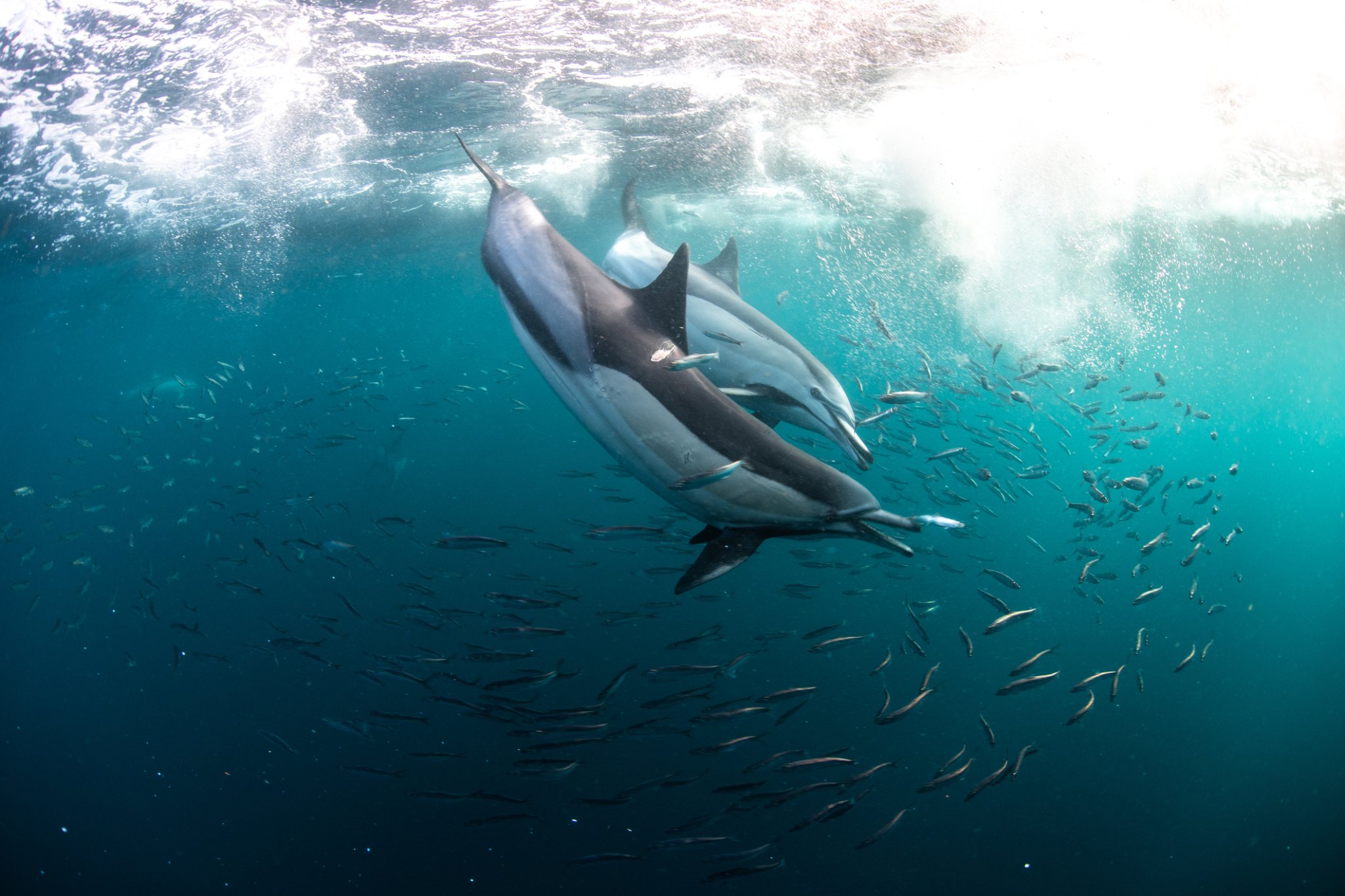The postcard was from Miami, Florida. If memory serves me correctly, it was taken in the 1920s. In the photo, a man in a full-brimmed hat and button-down shirt stands on the dock next to a scale. His left hand is holding a rod and reel, which looked to be a Fin-Nor or some other top-shelf offshore reel of that era. His right hand is touching his catch hanging at his side. The pose is classic old-time Florida. There are thousands of nearly identical photos and postcards like this from decades past, but this one always stuck with me. What you’d expect to see at this angler’s flank is a massive tarpon, goliath grouper, amberjack, or hammerhead. Instead, the catch is a giant porpoise.
I’ve spent a lot of time scouring the internet looking for the shot, and for the life of me I don’t recall exactly where I saw it the first time, though I believe it came across my desk many years ago while working for Salt Water Sportsman. What you can still find on the internet are ancient photos of well-dressed Florida anglers posing with trophy porpoises, but they all appear to be holding harpoons. The Miami postcard was the only I’d ever seen that suggested the marine mammal was caught on a rod and reel. It was a jarring image, because anyone who spends any time saltwater fishing knows two things: porpoises and dolphins are very abundant, but having one eat a hook never happens … or almost never happens. Why not?
Picky Eaters
Recently, the Daytona Beach News-Journal ran a story covering the interactions between porpoises and anglers. Several charter captains are interviewed in the piece, with the author posing the question of whether they’ve ever hooked a dolphin. All but one said no—and I’ll get to that outlier in a moment. But what has always baffled anglers is how dolphins and porpoises are so adept at not getting hooked. It’s almost uncanny, because they are occasionally bold enough to grab a fish you’re fighting, but they do it in such a surgical way that they miss the point of the hook. Meanwhile, as soon as you release your catch, dolphins will snatch it up in the blink of an eye.
I witnessed this firsthand in the Amazon years ago with the jungle’s famed freshwater pink dolphins. They followed our boat all day, circling wildly when we connected with a peacock bass, and though they’d charge the struggling fish, they’d never touch it while it was on the line. Releasing the smaller peacocks became somewhat of a game where we’d cheer for the ones that managed to bolt back to the shoreline cover before becoming pink dolphin lunch. So, how do these animals know which fish has a hook in it, and which doesn’t?
Brain Games
Dolphins and whales are equipped with echolocation abilities. This means they send out sound waves and interpret the echoes that bounce off objects and back to them. It’s how they navigate and avoid boats and predators. I’ve heard a theory that this built-in sonar is so strong and precise it will ping off the metal hook, alerting the dolphin not to chow down. According to the story, most anglers simply believe dolphins and porpoises are just extremely smart and able to discern between the movements of live prey with a hook in it and those without. Captain Jeff Patterson, who’s featured in the piece, theorizes that dolphins have such incredible eyesight they can see his fishing line. Captain Billy Pettigrew recounts a tale of dolphins swarming his boat during a nighttime snook trip. If he didn’t feed them undersized fish, they’d get angry. From the story:
“If I wasn’t feeding them, they’d run through the dock light and scare everything away,” he says. “They knew how to make me feed them. And they’re more bold at night. They’ll sit there, five feet away from my boat, all night long.”
Kiss Your Spool Goodbye
I’ve never really liked dolphins. As a little kid, I was all in on the sharks coloring book. Whales and dolphins? No thanks. Later, as I spent more time fishing salt water, I learned to loathe the dolphin psych-out—you see what looks like busting tuna or stripers from a distance, zip over, and it’s just a bunch of bottlenoses. The number of times I’ve had a solid bite shut down thanks to a pack of porpoises moving in are innumerable. I’ve certainly never had one so much as sniff one of my baits, but remember I said one captain featured in that story has felt the tug of Flipper on the end of his line? That was Captain Cody Moore of New Smyrna Outfitter. And it happened to him twice.
“Offshore, I had one eat a naked large ballyhoo,” Moore says. “He pulled off about 600 yards of line and broke off at the spool in about 10 seconds. In the lagoon, I had one eat a pigfish and do the same on a spinning rod.”
I’d guess that this type of thing happens more than we realize, we just don’t hear about every instance. But I hope it never happens to me. I’d love to know the specifics of the catch documented in that vintage Miami postcard, because I don’t believe there is a modern reel that could successfully stop (let alone land) an adult porpoise, so how was this achieved with the gear they had in the early 1900s? Regardless, keep this is mind: Marine mammals are highly protected. Don’t mess with them. If one does happen to clamp down on your live pinfish, cut the line. Then when you get back to the dock, buy a lottery ticket.

